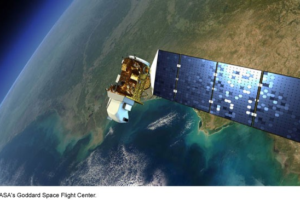Agencies Should Strengthen Collaborative Mechanisms and Processes to Address Potential Interference

In the U.S., the FCC and the National Telecommunications and Information Administration regulate radio-frequency spectrum use to ensure enough is available for 5G networks, satellites, etc. when there could be interference, FCC and NTIA coordinate with other federal agencies via interagency agreements and groups.
To address potential interference among proposed uses of spectrum, these agencies employ various coordination mechanisms. For domestic matters, the agencies coordinate through an NTIA-led committee that provides input to FCC’s spectrum proceedings. For U.S. participation in the International Telecommunication Union’s (ITU) World Radiocommunication Conferences (WRC), agencies coordinate via a preparatory committee that provides input used to develop U.S. positions that the Department of State submits to a regional body or directly to the WRC.
These mechanisms reflect some key collaboration practices but do not fully reflect others. For example, while the documents that guide coordination between FCC and NTIA and the preparatory committee emphasize reaching consensus whenever possible, there are no clearly defined and agreed-upon processes for resolving matters when agencies cannot do so. Additionally, neither document has been updated in almost 20 years, though agency officials said conditions regarding spectrum management activities have changed in that time. GAO’s review of U.S. participation in ITU’s 2019 WRC shows that these issues affected collaboration. For example, disputes among the agencies and the inability to reach agreement on U.S. technical contributions challenged the U.S.’s ability to present an agreed-upon basis for decisions or a unified position.
NOAA and NASA conduct and FCC and NTIA review technical interference studies on a case-by-case basis. When originating from ITU activities, the agencies conduct or review technical interference studies through participation in international technical meetings and the preparatory committee process. However, the lack of consensus on study design and, within the U.S. process, specific procedures to guide the design of these types of studies, hampered U.S. efforts to prepare for the 2019 WRC. For example, the U.S. did not submit its studies on certain key issues to the final technical meeting, resulting in some stakeholders questioning whether the corresponding U.S. positions were technically rooted. Agreed-upon procedures could help guide U.S. efforts to design these studies and consider tradeoffs between what is desirable versus practical, to mitigate the possibility of protracted disagreements in the future.

